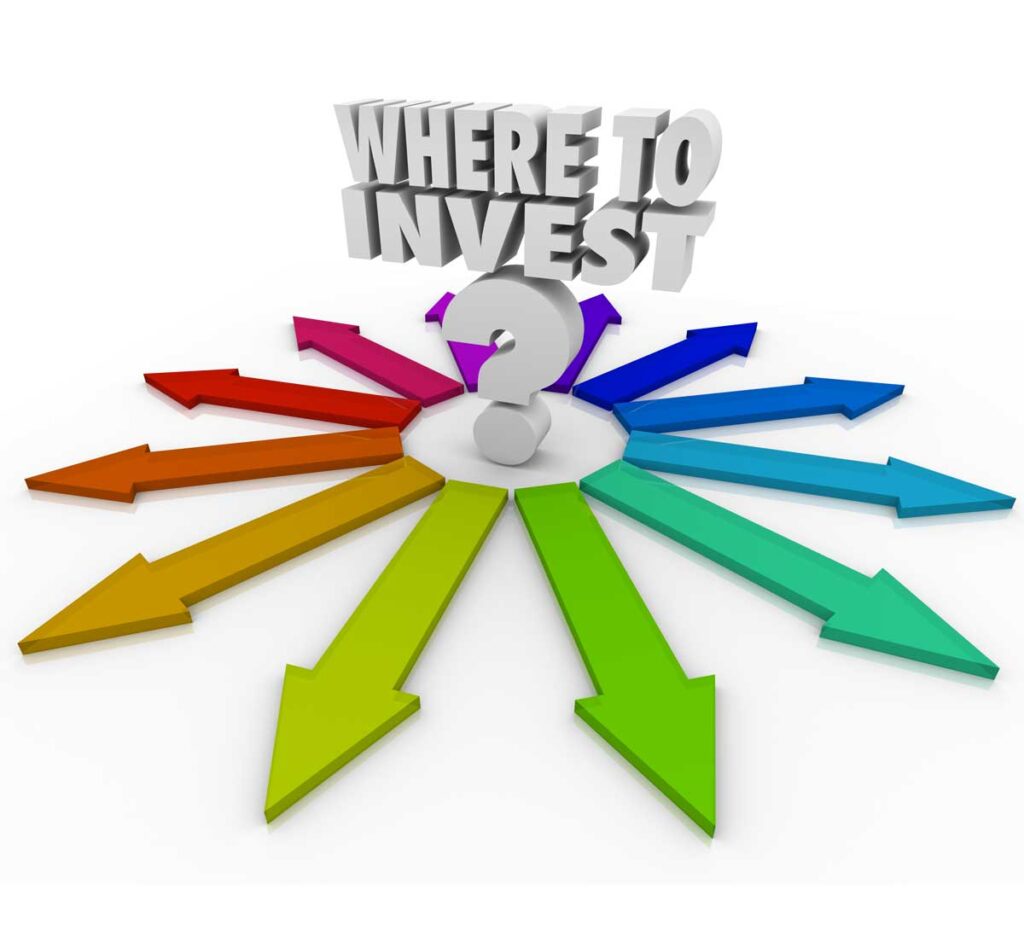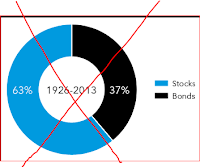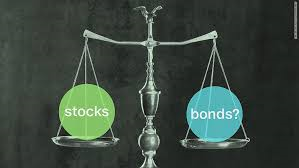The traditional diversification is dead. The regular guy learned a few investment lessons. Part I.
NOTE: I wrote this comprehensive article several years ago, but reviewed it in 2025. It is divided into four parts. The article is intended for those investors who are already familiar with investment categories and the stock market and have some experience in investing. If you are a novice in investing, I recommend that you start reading the following articles:
Summary
- You all were beginners at some point.
- I have been lucky to be a mentor for many IT professionals, and therefore, I have the mentor’s attitude, but I don’t pretend to be the one for investing. I would like to share my views and strategies on investing, as well as offer free investing resources.
- Globalization and advanced trading technologies have changed the stock market dramatically.
- The political environment is radically different from what it was years ago, and it is something that must be taken into account.
- The volatility became higher, and it requires more monitoring of your assets.
- Diversify differently to achieve your own goal.
This article is divided into several parts, where I discuss some issues that I consider essential for today’s investors.
Please note that I have no prior experience as an investment professional. This article presents an opportunity for me to share what I have learned over the past 20 years of investing, and more importantly, to solicit your feedback on my investment ideas and approach.
I certainly realize that they are not close to the score “very good” (I am not even talking about “perfect”). Still, I believe that since 1996, when I began my journey in the investing world, the market and active investing have taught me a few important lessons.
As a novice, I started investing in several mutual funds through one of the online brokers. I then gradually added some penny stocks that I had discovered through newsletters from investing “gurus.”
Looking at my trades now, it is evident that I have made all the possible mistakes the beginners usually make: buying high and panicky selling low, choosing the wrong stocks (including penny stocks) and ignoring the market trend, not learning the charts, not having the investment plan, no strategy… oh, well, you know what I am talking about.
Even 12 years later, in 2008, when I had, perhaps, some investing experience, I violated my own buy/sell rules and lost about $80,000 during the market crash by failing to sell when it was defined by my selling rule in the hope that it “cannot go lower”.
The biggest problem for any investor is being too lazy to review their past trades and analyze their own mistakes or successes. Have you lost money on bad trades? Why did it happen? Wrong stock? Bad timing? Have you watched the market at the time of purchasing the stock? All these and many more questions must be answered, or you will “step on the same rake” again and again.
I confess that I was lazy for many years. Serious investing demands a serious approach and diligent effort. Non-stop learning, adjusting, and polishing your investment style, having the right tool for monitoring/research, and, finally, having the inexpensive online broker with add-on values – all of it is a component of future success. Otherwise, don’t do this on your own.
At some point, a few years ago, I began analyzing all my past trades, which helped me avoid repeating old mistakes. I finally saw more profits than losses.
 DIVERSIFICATION? BEEN THERE, DONE THAT.
DIVERSIFICATION? BEEN THERE, DONE THAT.
Yes, you've heard it over and over: 60% stocks, 30% bonds, 10% gold… oh, no… 50% bonds, 20% US stocks, 20% International stocks, 5% gold, 5% treasury. Does it sound familiar? The problem is that it is NOT working for everyone, as suggested by talking heads from multiple sources.
When an investment guru recommends traditional diversification, it is typically based on historical performance and market conditions over the past 20-25 years. The proper diversification should be different for different investors, not to mention that the last 20-30 years were different: different governments, different global situations, different technology involved in the trading, different investments beyond traditional stocks and bonds, and many other factors that point to a straightforward statement: regularly suggested diversification that worked previously is not working as expected today.
Let me ask you, did we know China as one of the leading investment powers 20 years ago, with its influx of millions of investors? Did we have the High-Frequency Trading (HFT) investors who cause more volatility on a daily basis? Or something fancy like "algo" (algorithm) trading? Did we have the European Union on paper legs? Do you know how many new traders are on the market from developing countries? Was the Fed so influential 20 years ago? How about the trillions of debts?
You see, the market has undergone significant changes following the global shifts within our country and the growing influence of emerging countries, including China, Brazil, Russia, India, and a few others. The Fed’s manipulations with QE and interest rates, along with globalization, have vividly changed the global and U.S. markets. I don’t have to prove it – you may read about it daily.
Here is the beginning of the June 15th, 2018, article in Time.com:
…You know something is deeply wrong in our market system when a company like Microsoft, which has $100 billion in cash sitting in bank accounts (much of it offshore), decides it needs to borrow billions to fund its acquisition of the social networking platform LinkedIn.
The deal highlights one crucial way in which our market system is no longer serving the real economy. Why would a cash-rich firm like Microsoft go into debt and cause rating agency Moody’s to put it on a possible downgrade list? Because it will save around $9 billion in U.S. taxes by doing so. Debt is tax-deductible, and borrowing will save Microsoft money relative to bringing overseas cash back home and paying the U.S. corporate tax rate on it…
…Microsoft certainly isn’t alone in taking advantage of this phenomenon. U.S. companies have issued a record amount of debt in recent years, even as they have also accumulated record cash reserves. Take Apple, one of the most successful firms over the past 50 years. Apple has approximately $200 billion in its bank account. Yet, it has borrowed billions of dollars cheaply over the past several years to pay back investors via stock buybacks and dividends to bolster its share price (because the underlying corporate growth story hasn’t done that on its own)."
Let me throw the wrench… Another thought that came to my mind was that complete diversification across the industries and sectors is the wrong approach. If you equally invest in each sector, the industries that perform well will generate gains, but the sectors that are at the bottom will cause you heavy losses (like materials for the last few years).
The result? Your yearly total is close to zero in the best-case scenario. Even if you wait for long enough, your best-performing sectors will become the worst (you know about the “market rotation”, right?), and the result of your investment will be the same. You may disagree with me, but it has also influenced my investing approach.
This is why I examine the top 10% of industries/sectors/groups that consistently outperform the remaining 90% of the time, and I’d rather invest in those groups than fully diversify.
Unless you want to ignore all those factors and do not care about the potential risk of losing part of your investment, traditional diversification doesn’t work. Period. Just look at the bonds today and their prospects for the next several years, given the rising interest rates… (Author: at that time, in 2018)
We need another diversification strategy that reflects the oscillating market, offers some degree of protection against global disasters both within and outside our country, and aligns with the environment in which we live and invest today, with potential implications. It is an almost impossible task to build one.
So, who should the regular investor listen to to build the right, diversified portfolio? Newsletter “gurus” or Jim Cramer? Financial advisers? Retirement Services? My answer: listen to your own guts! Please rely on your own understanding of the market (whatever it may be: pessimistic or optimistic) and your personal situation (including age, finances, and investment experience).
Spend enough time to understand the stock market – it will pay you back handsomely. On the other hand, if you want to review your investments twice a year, consider the “Go Fishing” portfolio suggested by Alexander Green (Oxford Club). I respect its concept, but I cannot fully accept the lazy, index-investing approach, especially given the low profits. (I have some interesting investment approaches to index investing that I will discuss later.)
If you think I can suggest the best investment strategy, I'm afraid I have to disappoint you. What you can do is get familiar with mine and make your own corrections, or you can deny it altogether. I bet you have a different situation, finances, and expertise, and, therefore, you might have your own diversification strategy; don’t stick to that 40%/60% mumbo-jumbo.
To me, diversification means separating various assets into their own environment, including those that are less dependent on market conditions. Call me a contrarian, a fool, or whoever you want, but I am completely ignoring suggested diversification from investment giants (Fidelity, etc.) and other investment professionals. Do they care about my personal investments? No. They write the articles to make money. I invest my own money to rely on it later and to make a living.
For instance, I don’t feel secure investing 20-30% of my assets abroad. My observations over the years taught me that the foreign market is way more volatile than the US market. As one blogger noted, “When the US just 'passed the gas', the foreign markets experienced an earthquake.” Foreign market volatility is beyond my comfort zone, especially as I approach retirement.
The globalization and existence of thousands of ETFs that diversify their investments across several countries blur the borders between US and foreign investments. I don’t usually hold pure foreign stocks, but I still have a few investments with foreign market exposure, with the amount of money invested in them being well below 10% of my assets.
If you don’t have a good strategy and the set of trading rules that you have to follow religiously, you will experience either losses or just an average return (http://seekingalpha.com/article/3975500-average-investors-get-average-results-retirement ).
Please continue to Part II under Category: Investments

